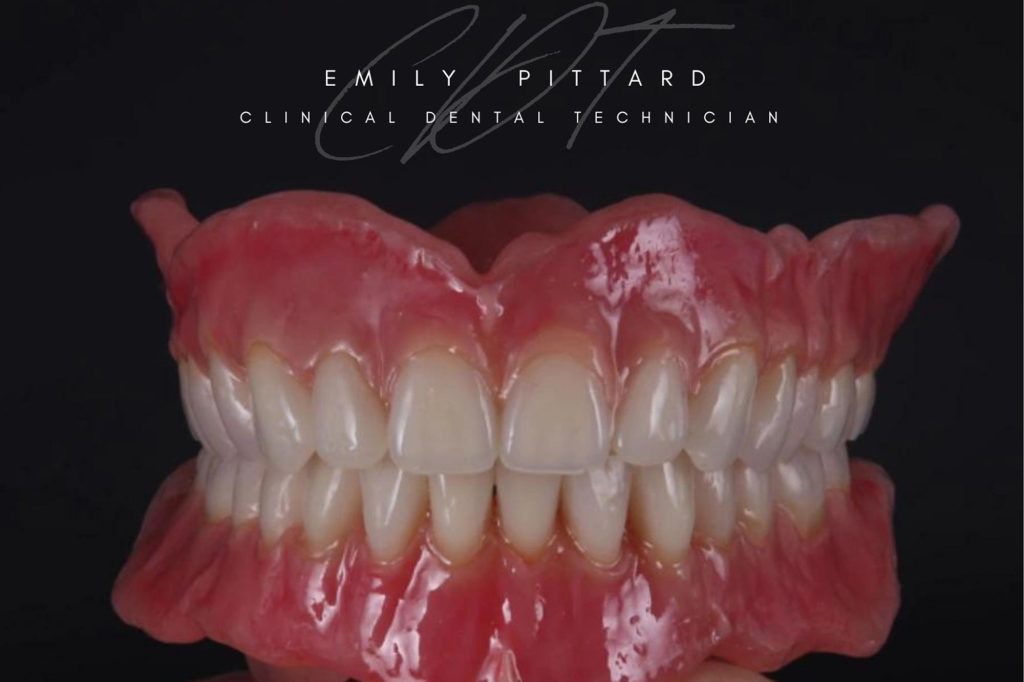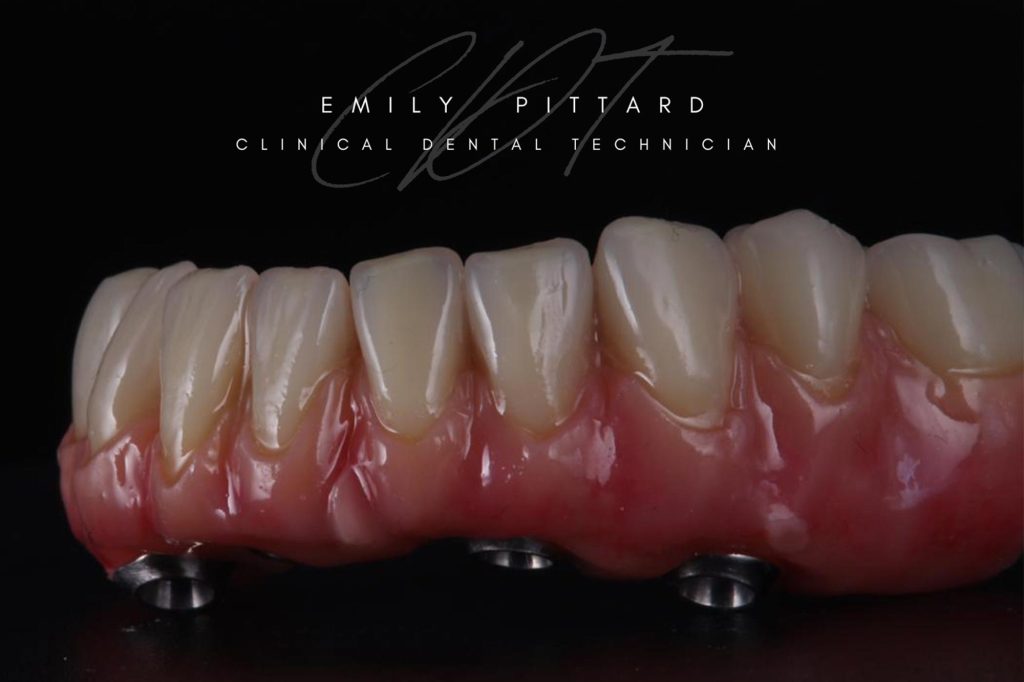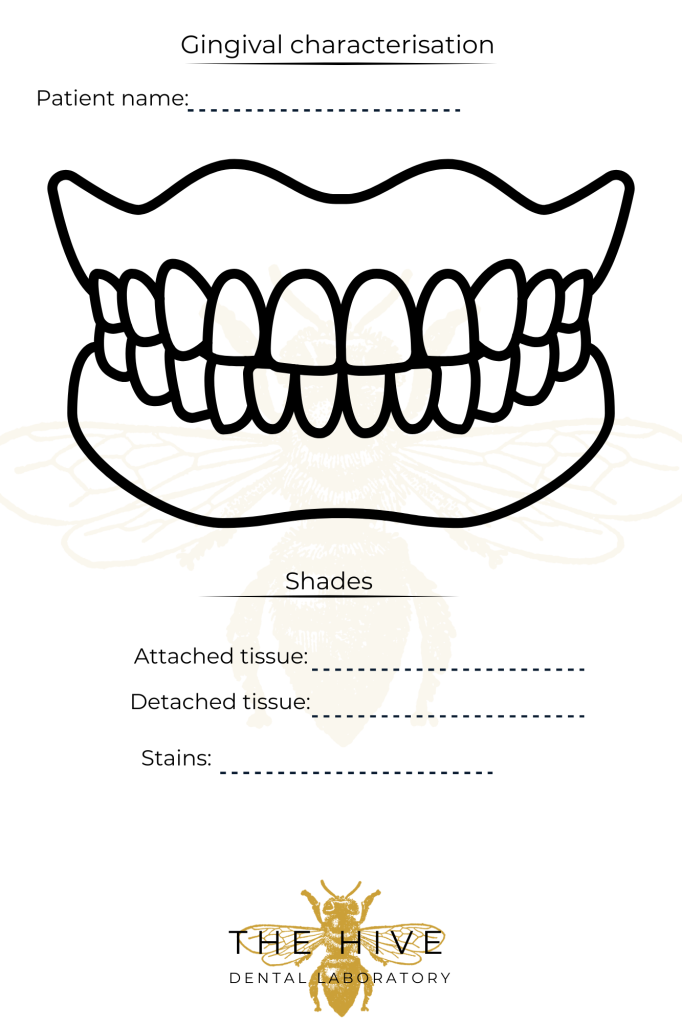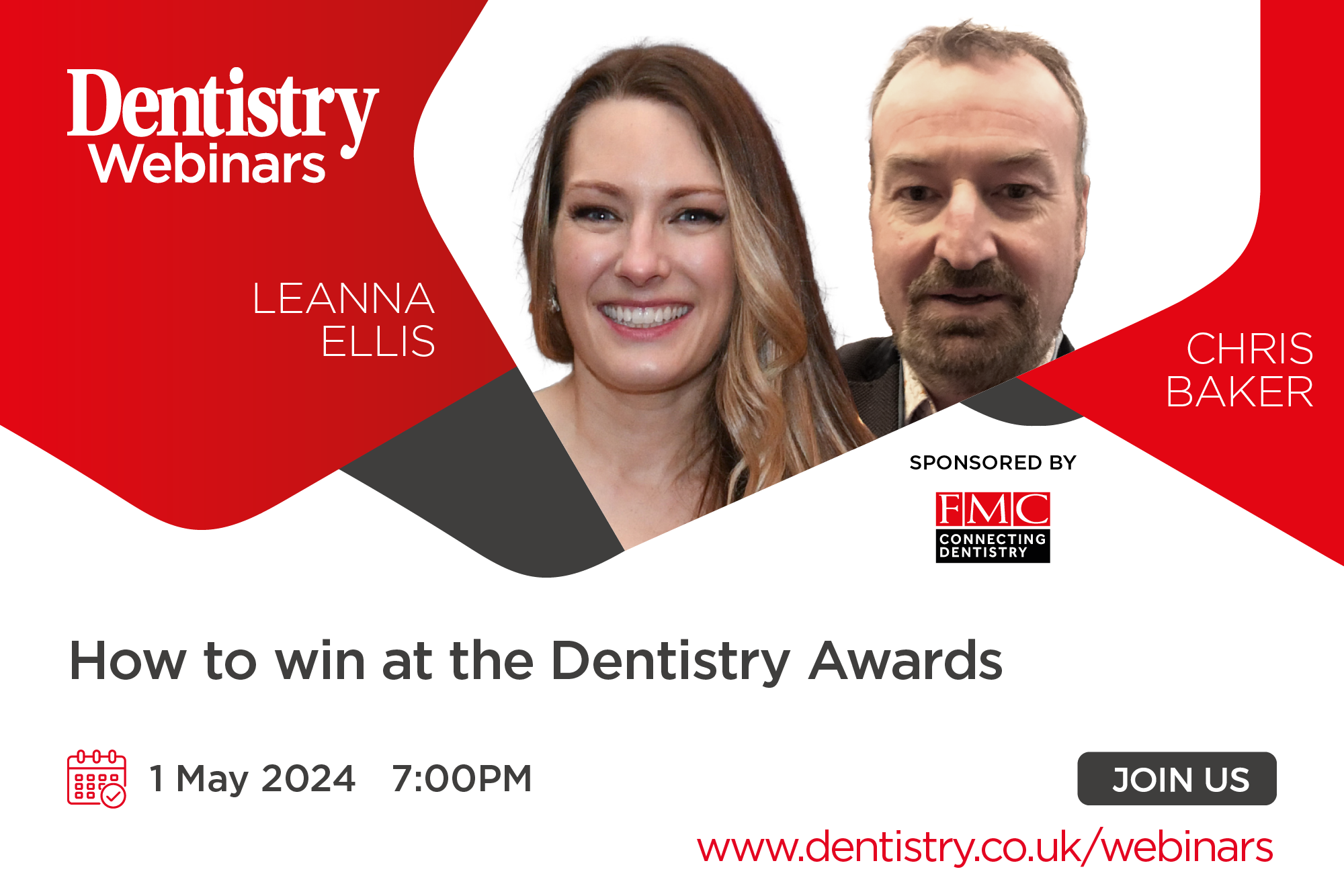
Emily Pittard explains how important communication and information is for lab, patient and dentist, and why this inspired her to create her own gingival characterisation shade guide.
I started as a dental nurse with a strong understanding of documenting information, as it was my role to ensure all the dental notes were both accurate and contemporaneous. I wrote up the lab dockets as dictated by the dentist. At times I would feel like I was writing reams of information, but when it came to writing the lab docket it would sometimes simply say: ‘Crown UL6 shade A3’ or ‘P/- Acrylic denture Shade A2’.
This, at the time, was normal to me. Maybe I felt that the technicians had this wealth of knowledge that they gathered from the impressions, so they didn’t need any more information. Whatever the case, I didn’t give it much thought as I was always directed by the dentist.
More information
I then went on to become a dental technician, where I suddenly discovered we need a lot more information than just the device and the shade. At times, which I am sure a lot of technicians and labs have experienced, trying to get hold of a dentist for a bit more information (you’d be surprised by how often the shade is left off) like an alternative design or a drag on an impression can be a lengthy ordeal. It can throw the whole workflow off. Every job that comes into the laboratory has a carefully allocated timescale to allow for it to be checked, poured or printed, created, quality controlled, packaged, invoiced and driven/posted back to the client. Replying to your lab a day late can cause quite a delay in production and at times can result in requesting a new return date.
This, in turn, results in the admin team of both the clinic and the laboratory having to rejig everything. And this is the best-case scenario, I haven’t even touched upon the patient getting angry about changing their ‘fit date’ or having a holiday or wedding or second cousin’s Bat Mitzvah that they really wanted their UL6 crown for. At times like these, the poor dental clinic reception may get a frosty reply, which is then transferred to the lab admin team. This is usually in the form of: ‘Can you get this made any faster? The patient isn’t impressed,’ or: ‘Pt angry, need back for original return date.’
And to think, all of this could have been avoided with some clear communication…

Rectifying past mistakes
I later opened my own laboratory, the Hive Dental Laboratory, and became a clinical dental technician (CDT). This was the perfect qualification to merge my two previous qualifications, making me tri-qualified and in a unique position to rectify everything I have seen go wrong in other workplaces.
The first thing I wanted to do was create a WhatsApp group with each client of the Hive and the reception team. I found this was the best way to get a quick response from the dentist, and my admin team can keep track of all the information. I created a phone log where all calls are documented with the date, initials of the team member and the name of the person they have spoken to, to ensure nothing is missed. And if we are ever met with ‘we didn’t get a call informing us of a new return date’, we can instantly have the time, date and name of the person that we spoke with – not to mention a follow-up WhatsApp screenshot of us informing the clinician.
‘Dental artisans’
Thankfully, we have really conscientious clients at the Hive, which means we rarely have to whack out the call log big guns. But the peace of mind this brings, both to my co-director and myself, is everything.
We have also opened our own dental clinic. As a clinician in surgery, I do my level best to try and gather as much information for my tech team as possible. Sometimes I feel the name ‘dental technician’ conjures the image of some blokes with a bag of tools, some nuts and bolts and the odd bit of wax sat in the eyebrows. I prefer the term ‘dental artisans’ because that’s what they are, creating bespoke medical devices where no two creations are the same.
And as for the image of some bloke, well, the Nightshift movement to empower female dental technicians has chucked that straight in the bin.
If, as the clinician, I am the commissioner for such artwork, shouldn’t I try to be as specific as possible? Otherwise, my vision of the outcome could be completely different to the dental artisans.

Shade guides
As a CDT, I create a lot of dentures and implant-supported overdentures. My favourite thing to do at the bench is gingival and tooth characterisation. I realised this is something really difficult to convey to the dental artisans, especially the gingival pigmentation and interproximal staining. Of course, photographs are an absolute must! But what else can I do?
Then, bingo – I created a gingival characterisation shade guide. I deliberately chose a simple black and white design so as not to result in the clinician being banned from using the printer as all the ink keeps going.

I like using Ivoclar Nexco composite. It has its own gingiva shade guide, which I bought and use for shade matching, just as you would with tooth shade matching. I can then use the diagram to draw the areas on the flange and/or note the attached and detached tissue shade.
Taking a photo with the gingival shade tabs against the gingiva helps the lab colour match. I also download the chrome design sheet from Finlay Sutton’s treasure trove of free content on his website. The Hive team are also in the process of making our own for our clients.
I have found a lot of clinicians are happy to do what is needed to get the best results for their patients. Sometimes they may need a gentle reminder for photos, or a subtle printout of this sheet in their box along with their try-in. We all need to find the best way to communicate. As a self-professed visual learner, this is just one of the many ways I optimise my communication with my dental team.
Follow Dentistry.co.uk on Instagram to keep up with all the latest dental news and trends.



